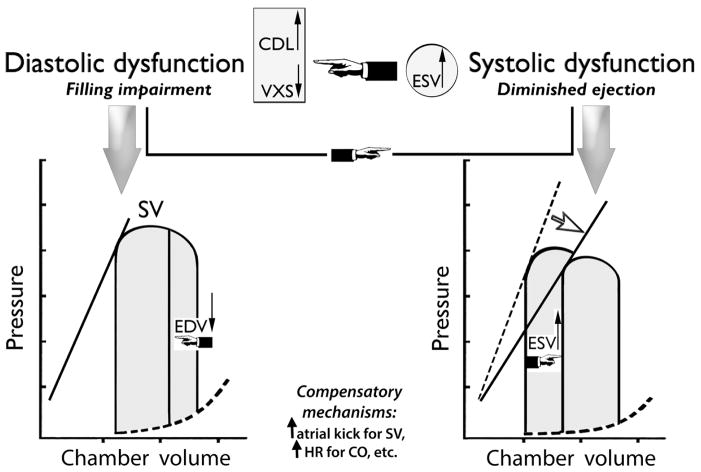Fig. 6.
Bottom panels in diastolic dysfunction/failure, the diastolic pressure-volume relation (dashed curve) shifts upward-and-leftward (counter-clockwise rotation), indicative of disproportionately large pressure increments as volume rises during filling; if there ensues an EDV decrease, e.g., with loss of atrial kick in atrial fibrillation, then SV falls too. In systolic dysfunction/failure, a clockwise rotation of the end-systolic pressure-volume line imputes decreased myocardial contractility for the reduced ejection fraction and increased ESV. Top panels: in systolic dysfunction, the increased ESV augments the CDL and depresses the diastolic filling vortex strength, leading to filling impairment. Through the increased ESV and superimposed filling impairment, a primary systolic dysfunction/failure can beget supplementary diastolic filling impairment/dysfunction, increasing the need for compensatory mechanisms for maintenance of SV and/or CO. Conversely, diastolic dysfunction with impaired chamber filling can lead directly to a preload-dependent stroke volume curtailment. EDV=end-diastolic volume; ESV=end-systolic volume; SV=stroke volume; CO=cardiac output; CDL=convective deceleration load; VXS=diastolic vortex strength.

